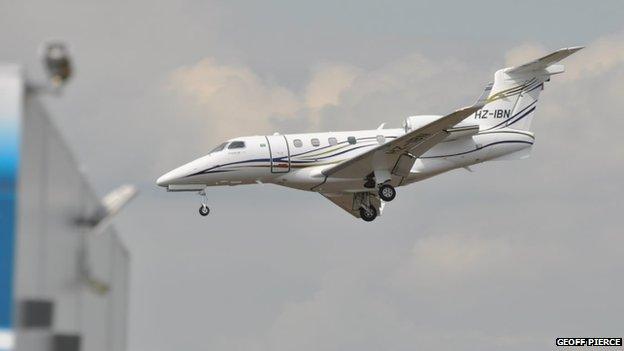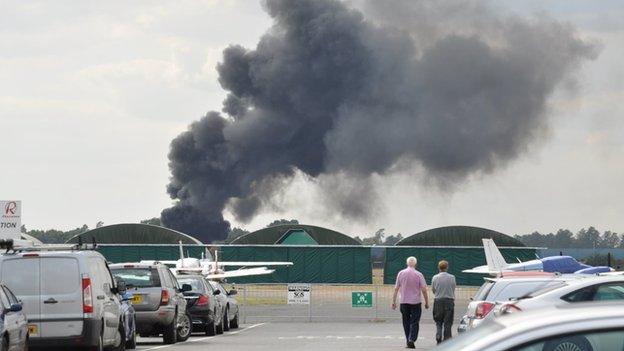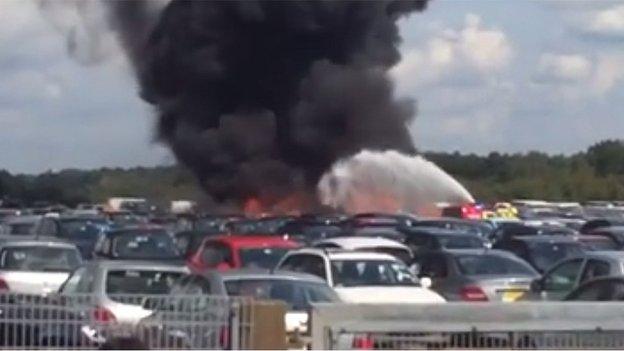Bin Laden crash pilot 'suffering from mental overload'
- Published

The crash happened at a car auction site at the airport
A pilot may have been suffering from "mental overload" when he crash-landed, killing three members of Osama Bin Laden's family, an inquiry has found.
The jet overshot the runway at Blackbushe Airport in July 2015 and crashed into a car auction site.
The Air Accidents Investigations Branch (AAIB) said emergency warnings prior to landing may have "saturated the pilot's mental capacity".
The pilot and three passengers survived the crash but died in a severe fire.
Bin Laden's half-sister, Sana Mohammed Bin Laden, her mother, Raja Bashir Hashim, and his brother-in-law, Zuhair Hashim, were killed, along with pilot Mazen Al-Aqeel Da'jah Salem.

Aviation enthusiast Geoff Pierce took this photograph of the aircraft moments before it crashed
The AAIB report said the private Saudi-registered Phenom 300 jet, travelling from Milan, Italy, landed at high speed and touched down on 31 July 2015 with only 438m (1,437 ft) of runway remaining.
It collided with an earth bank before crashing into a British Car Auctions site, losing one of its wings and bursting into flames among parked cars.
Airport firefighters, who arrived on the scene within five minutes, were unable to control an "intense" blaze involving leaking fuel.
Eyewitnesses at the scene said there had been a "ball of flames" and "several explosions".
The AAIB said the three passengers appeared to have made an unsuccessful attempt to open the cabin door.

The Bin Laden family severed ties with Osama before disowning him after the 11 September attacks
The report said the 57-year-old Jordanian pilot may have become "fixated on landing" because of "a very high workload situation" in the final minutes of the flight.
He made an emergency climb to avoid colliding with a microlight, and then came close to a second light aircraft.
The jet then began "a very high-speed descent", dropping at up to 3,000ft per minute.
The pilot ignored six "pull up" warnings from the aircraft's Terrain Avoidance and Warning System (TAWS), touching down at a speed of about 135 knots (155mph).
The AAIB said the 66 messages and alarms in the final three-and-a-half minutes of the flight may have created "audio overload" and "mental stressors".
"It is possible that in these circumstances the pilot... fixated on his initial strategy (landing) and lacked the mental capacity to recognise that the approach had become unstable," the report said.
Following the crash, the jet's operators have installed co-pilots on all Phenom 300 flights.

An AAIB diagram showed the aircraft's final position
- Published6 August 2015

- Published3 August 2015

- Published1 August 2015

- Published31 July 2015

- Published31 July 2015
